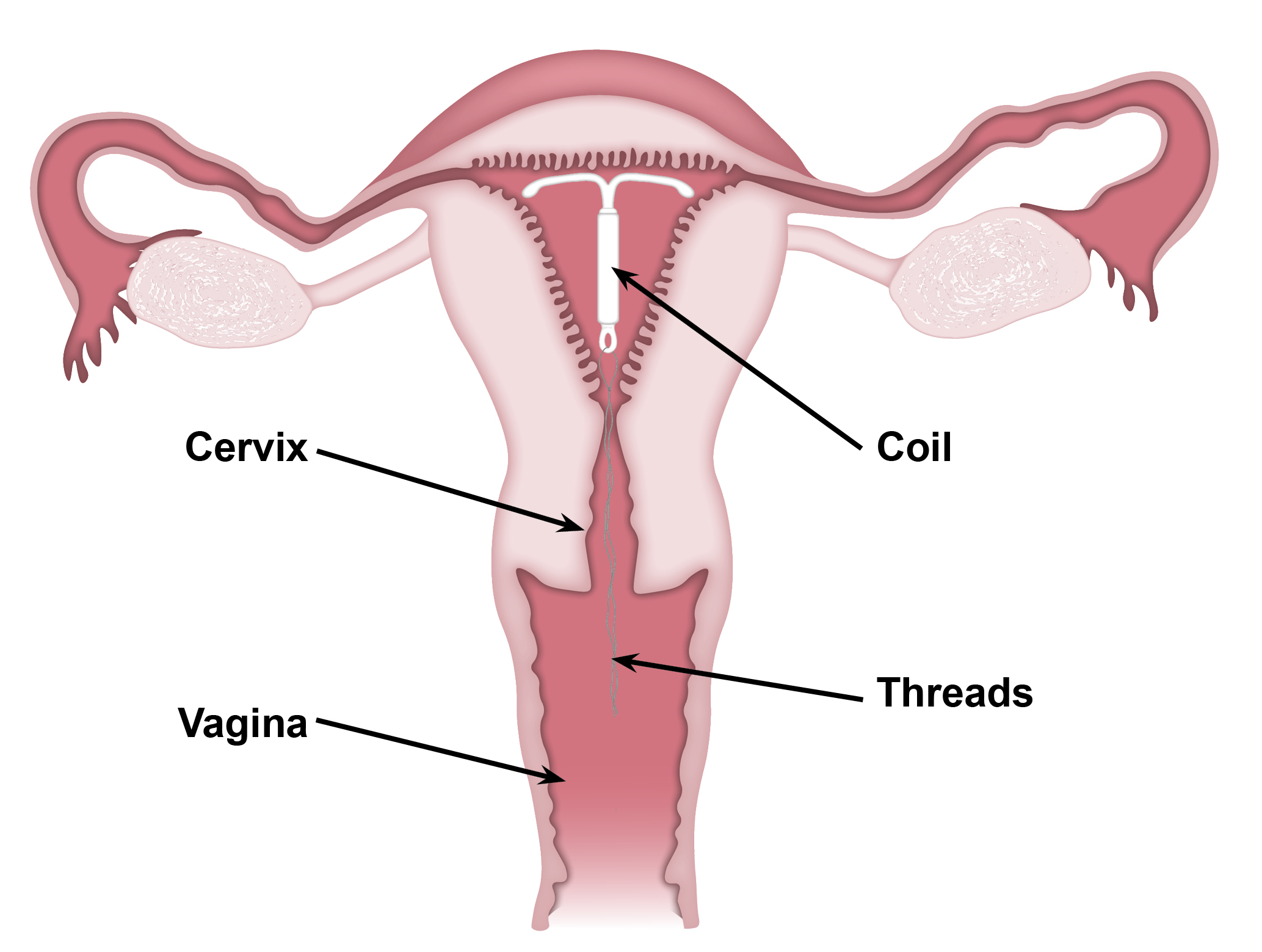Contraceptive coil insertion at the time of caesarean birth
Information for women, birthing people, and their families
An Intrauterine Device (IUD) and Intrauterine System (IUS), are both commonly known as a ‘coil’. A coil is one of the most effective ways of preventing or delaying a further pregnancy. It is possible to have this fitted at the time of a caesarean birth. It is inserted through the opening in the womb, after the placenta (afterbirth) has been removed.

We advise all women or birthing people to avoid falling pregnant for at least one year after a caesarean birth. This allows the scar to heal before your next pregnancy. One option is to have a long-acting contraceptive coil inserted during your caesarean birth.
Why might this be good?
Having a coil insertion is a very safe procedure.
The coil gives a long-acting contraception straight away.
The procedure is painless (you will already have anaesthetic for your caesarean) and quick (it only takes a few minutes to insert).
It is a convenient time, and means one less visit / examination at a later date.
Either the hormone coil (Mirena® / Levosert) or hormone-free copper coil can be fitted at this time. Both are safe to use while breastfeeding.
The copper coil (IUD) is effective for 10 years. It may cause heavier periods.
The hormonal coil (IUS) is effective for five years. It may cause lighter or no periods at all.
What else do I need to know?
You will need to have a vaginal examination, or speculum examination after or around six weeks. This is to make sure the threads can be seen and to trim them if needed.
In five to 10 of every 100 patients, there is a risk that the coil will fall out.
Condoms should be used for six weeks / until your follow-up check.
Do I need a follow-up appointment?
You will need to have a check-up after around six weeks to make sure the coil threads can be seen, and to trim them if needed.
You will be told where to go for this follow-up appointment. This could be in the hospital, local family planning or sexual health clinic, or your GP may be happy to check this for you.
When the coil is placed inside your womb during caesarean birth, there may be a higher chance that the threads will not be seen at your check-up visit. However, if the coil is in the right place, the threads will not affect how the coils works. Removal is not needed.
If the threads cannot be seen clearly at this time, you will need an ultrasound scan to check that the coil is still inside your womb. This is common after any coil insertion. If your check-up is done at your local sexual health clinic or hospital, it may be possible for this scan to be done during the same visit.
If you have any concerns and queries, please contact one of the following:
Women’s Health Suite, William Harvey Hospital Ashford
Telephone: 01233 651987Gynaecology Assessment Unit, Queen Elizabeth the Queen Mother (QEQM) Hospital Margate
Telephone: 01843 235009
I’m keen to have this, what should I do next?
If you want to have a coil fitted during your caesarean birth, let your midwife or obstetrician know. There is a quick checklist for you to complete to make sure you understand the method and procedure. The doctor performing your surgery will check this with you again on the day of your operation.
I’m not sure, where can I find out more about it?
More information is available in the Postnatal Contraception leaflet, which is available from your midwife. Alternatively, more information on contraception can be found on the NHS website.
If you have any further questions, please speak to your midwife or GP.
Before your coil insertion check list
We will aim to insert an IUD / IUS at the time of your caesarean birth, if you wish. It is important that you have read the following information before your surgery. You must be suitable for the procedure on the day you come in. If you have any questions, please speak to your doctor.
Please bring this with you when you come to hospital.
I have read the leaflet or I have already had an IUD / IUS and I am familiar with the method.
I understand that no method is 100% effective but that the IUD / IUS has a very low risk of failure. (Less than one pregnancy per 100 women over one year).
I understand that there might be less than one in 1000 chance of injury to the womb. (Perforation at the time of insertion of the device).
I understand that there is approximately a one in 20 chance of the device falling out, or being expelled from the womb after insertion.
I understand that the IUD / IUS will not protect against sexually transmitted infections. Condoms are recommended in addition if, for example, I have a new partner.
I understand that there is a small risk of infection (one in 100) in the first few weeks following insertion of the device. This is not any higher than if the coil were fitted later on.
I know that a copper IUD can make my periods slightly heavier, longer, and more painful.
I know that an IUS (Mirena) will make my periods much lighter. It may cause some erratic bleeding or spotting in the first few months of use.
I understand that I will need to attend a check-up at around four to six weeks, as the coil threads might need to be trimmed. If threads are not seen at this time, I will need an ultrasound scan to confirm that the IUD / IUS is still in place.
I understand that in rare circumstances it may not be possible to fit the device during my caesarean. In this situation, it would be postponed for at least four weeks.